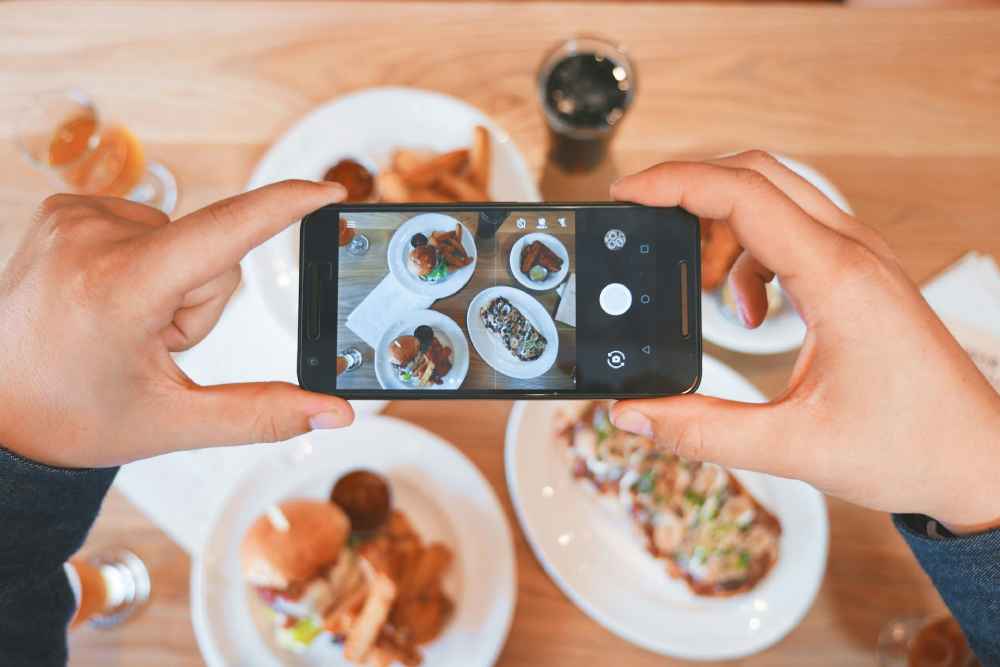Social media has dramatically transformed the landscape of food culture. From discovering local eats to the proliferation of international cuisines, these digital platforms have sown the seeds of culinary curiosity in millions of hearts.
For instance, a food blogger’s journey to an exotic location can introduce a new palate to followers back home, turning obscure dishes into must-try trends as platforms like Instagram and Pinterest act as ever-present Valued Voice in food circles, home chefs and restaurateurs alike are keenly tuning in to catch the next wave of the culinary revolution.
The visual nature of platforms has allowed chefs and amateurs to showcase their culinary creations in engaging and artistic ways, effectively turning every meal into a potential viral sensation. This has elevated the status of chefs and food influencers and created a new avenue for food education, with step-by-step cooking tutorials becoming increasingly popular.
Moreover, hashtags like #FoodPorn and #EatLocal encourage users to explore new foods and share their dining experiences, further knitting a global community of food lovers.
Contents
- 1 Role of Influencers in Shaping Food Trends
- 2 Decoding the Virality of Food Trends
- 3 Gauging the Impact of Social Media on Food Businesses
- 4 The Social Media Recipe for Food Promotion
- 5 Addressing the Challenges of Food Marketing on Digital Platforms
- 6 From Farm to Feed: The Role of Authenticity in Food Content
- 7 Measuring the Success of Food Marketing Campaigns on Social Media
- 8 Innovative Food Influencer Collaborations
Role of Influencers in Shaping Food Trends
Food influencers are the new celebrity chefs of the digital era, wielding influence that can reshape dining tables worldwide.
With their large following and the power to draw viewers into a sensory journey through high-quality visuals and compelling narratives, influencers have turned platforms such as YouTube and TikTok into arenas where food trends are made and broken. They can introduce novel concepts and promote sustainable and ethical eating practices, setting a course for responsible gastronomy.
Decoding the Virality of Food Trends
While a beautiful presentation and taste are paramount to the success of a culinary trend, the secret sauce to virality often lies in its ability to captivate and resonate with a broad audience. The algorithmic nature of platforms like Facebook and Instagram amplifies the reach of content that triggers user interaction and sharing, propelling certain dishes to stardom.
The ‘unicorn food’ craze and the recent ‘Algona coffee’ phenomenon are testaments to how creativity paired with social media savvy can turn simple recipes into global sensations.
Gauging the Impact of Social Media on Food Businesses
In this digital age, a vibrant social media presence is almost as crucial as the freshness of ingredients for a food business. Social platforms have democratized how restaurateurs and food producers connect with patrons, breaking down barriers and inviting customers into a more engaging and personalized culinary experience.
From featuring user-generated content to leveraging influencer partnerships, businesses are finding innovative ways to foster a loyal community and enhance their brand identity online.
The Social Media Recipe for Food Promotion
Behind every drool-worthy food photo or viral recipe video is a meticulously crafted strategy combining the art of cooking with the science of marketing. Creating a sense of anticipation, delivering consistently high-quality content, and maintaining a relatable tone are just some ingredients for social media success.
By analyzing audience preferences and behavior, brands can fine-tune their digital menus to serve content that attracts and retains customer attention.
- Crafting a compelling narrative around food origins and preparation.
- Leveraging user-generated content to build community trust and involvement.
- Utilizing social media analytics to track engagement and fine-tune content strategies.
Addressing the Challenges of Food Marketing on Digital Platforms
The digital food market is a space of abundant opportunity and relentless competition. Food marketers must constantly be on their toes to innovate and stand out in the crowded social media feeds. They face the challenge of capturing consumers’ interest and retaining it amidst ever-shortening attention spans.
In addition, the instantaneous nature of online feedback requires brands to be ever vigilant, proactively managing their digital reputation with prompt and sincere customer engagement.
From Farm to Feed: The Role of Authenticity in Food Content
Amidst the sea of stylized food images, there is a growing appetite for authentic stories and ethical practices behind the cuisine. Consumers are more interested than ever in the origins of their food – the farmers who grow it, the chefs who craft it, and the journey it takes to reach their plates.
This shift towards transparency drives content creators and food brands to adopt a more genuine narrative approach, fostering a stronger connection with their audience and promoting sustainable practices.
Measuring the Success of Food Marketing Campaigns on Social Media
While surface-level metrics like likes and shares are readily visible, the proper measures of a social media campaign’s impact lie underneath. Deep analytics reveal consumer engagement patterns, sentiment analysis, and conversion rates, providing invaluable feedback on the effectiveness of marketing efforts.
Brands that keep a close eye on these metrics and respond with agility are the ones that genuinely savor the taste of success in the digital food space.
Innovative Food Influencer Collaborations
Cutting-edge collaborations between influencers and food brands can create buzz and broaden consumer bases. These partnerships unlock a two-way street of benefits: influencers enjoy creative culinary endeavors while brands tap into the influencer’s loyal following.
Successful collaborations can take many forms, from exclusive recipe development to hosting virtual cook-along or organizing food-tasting events.



